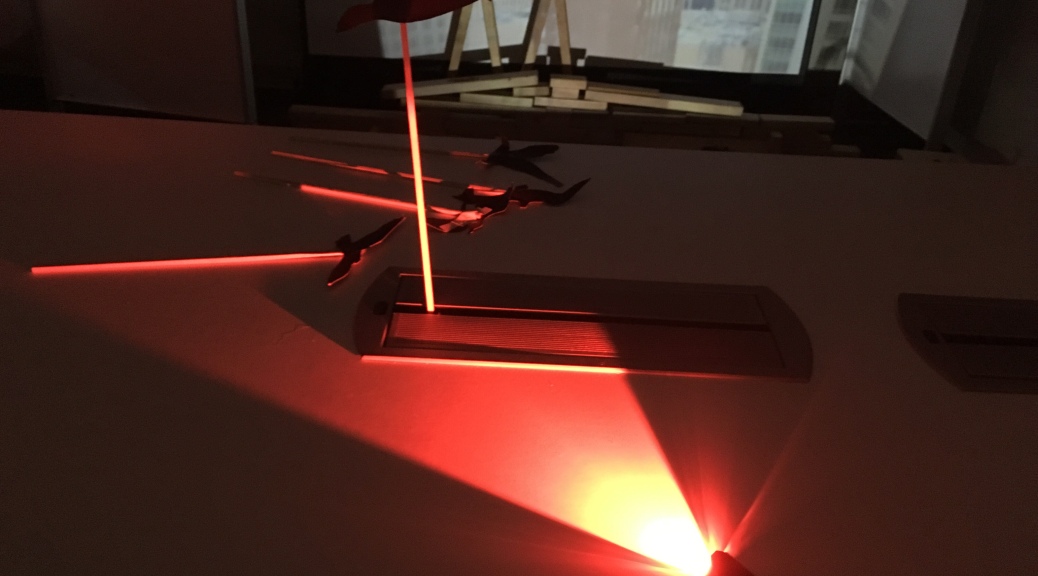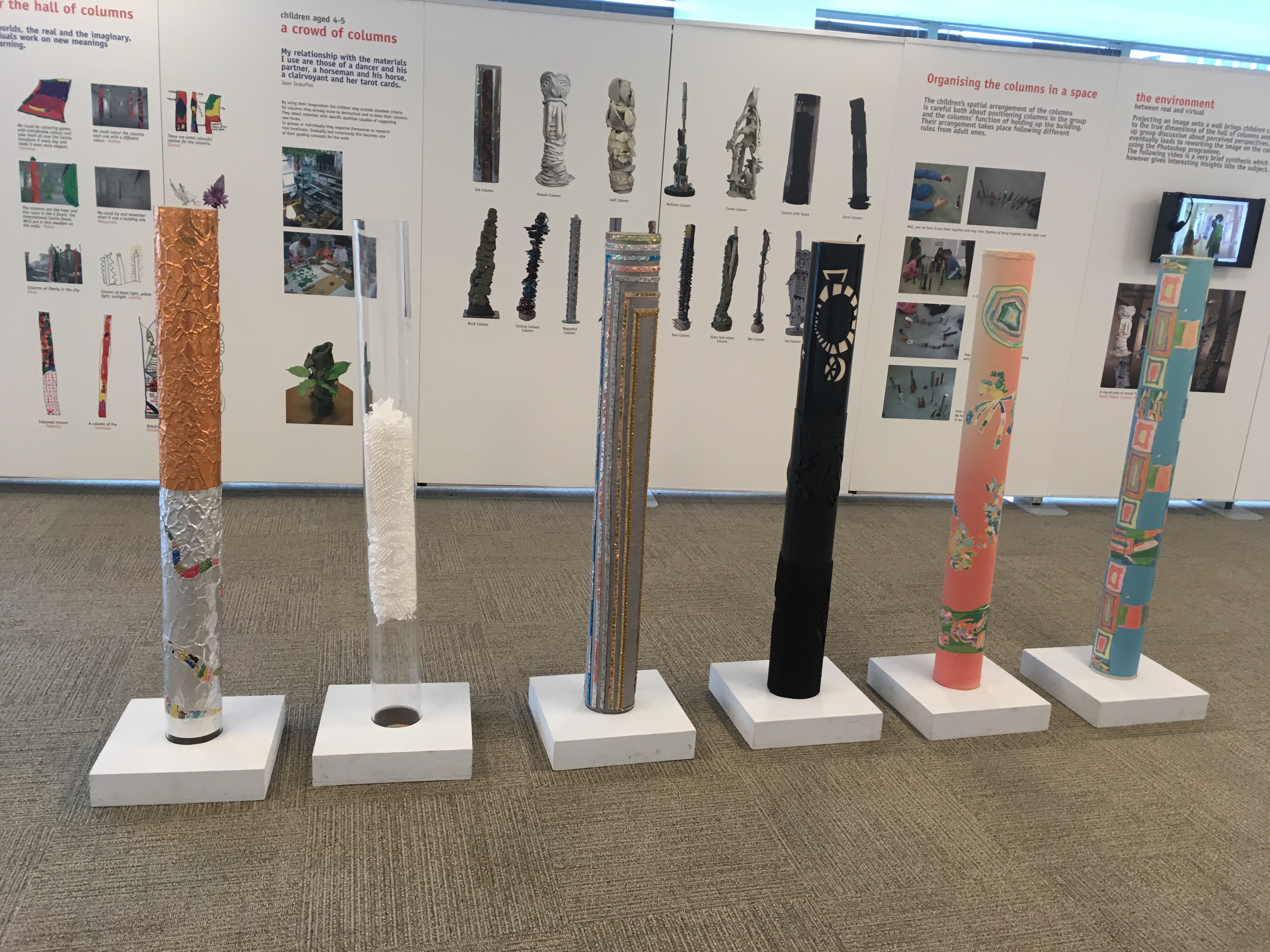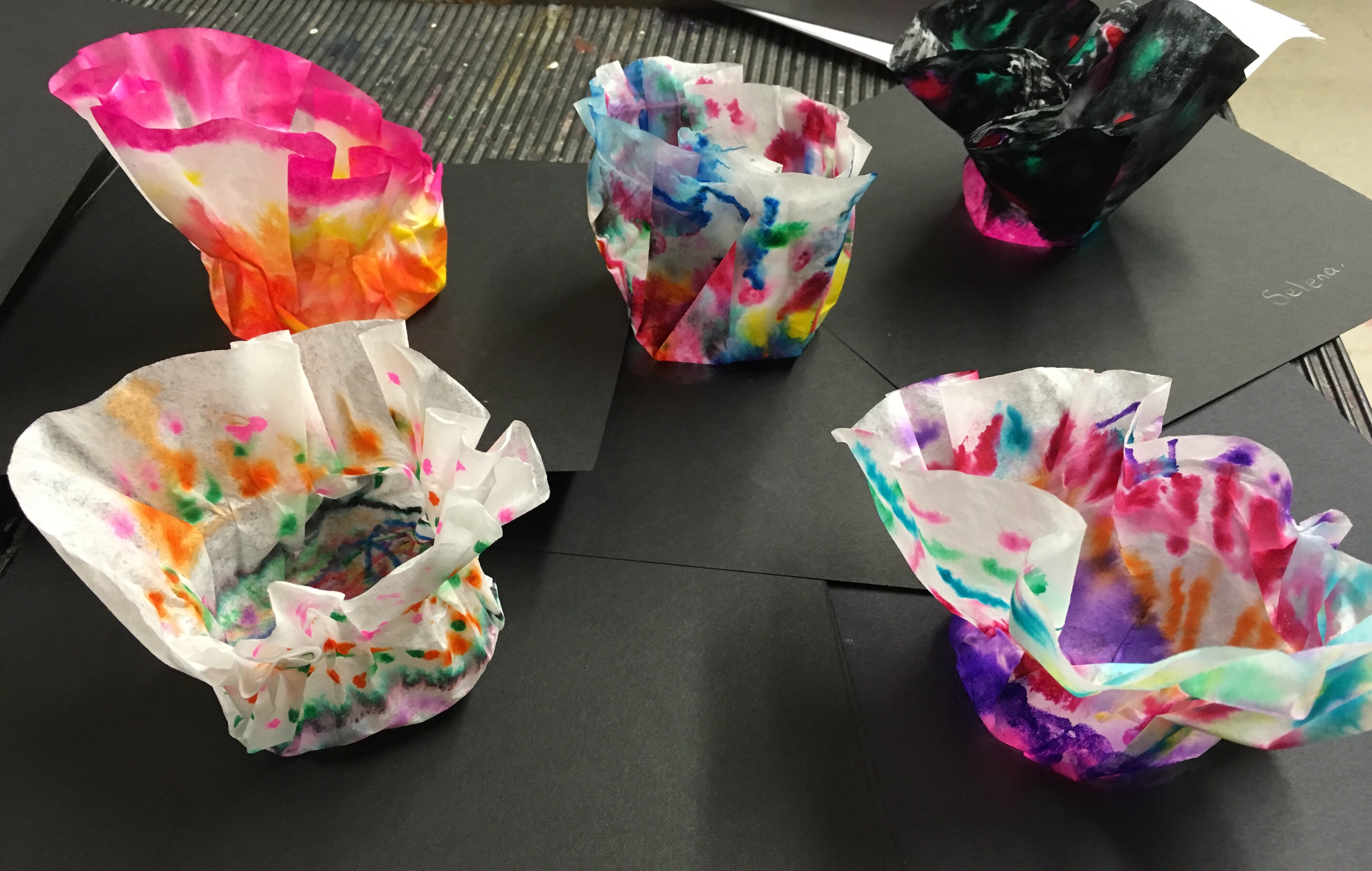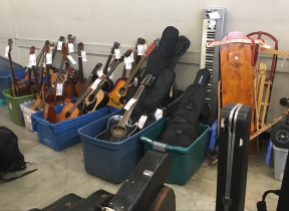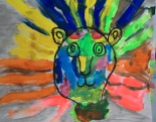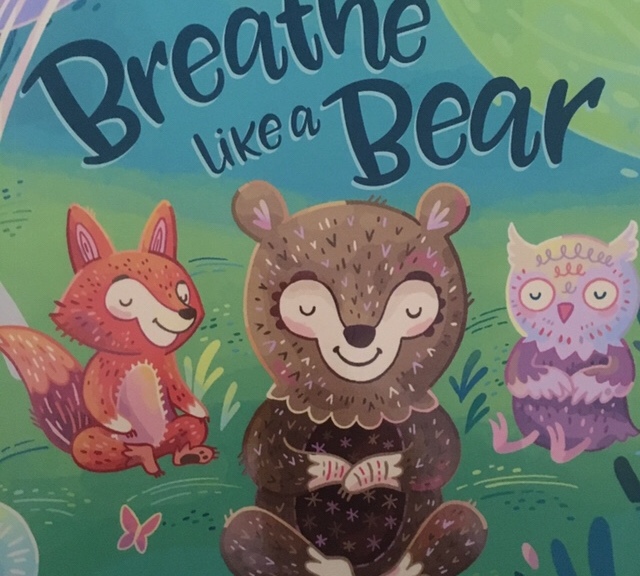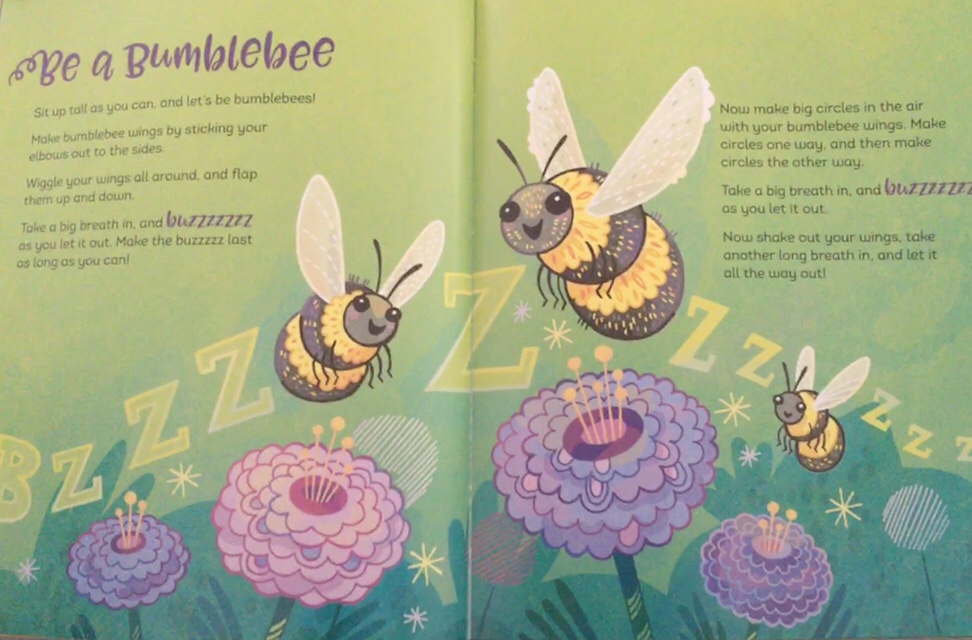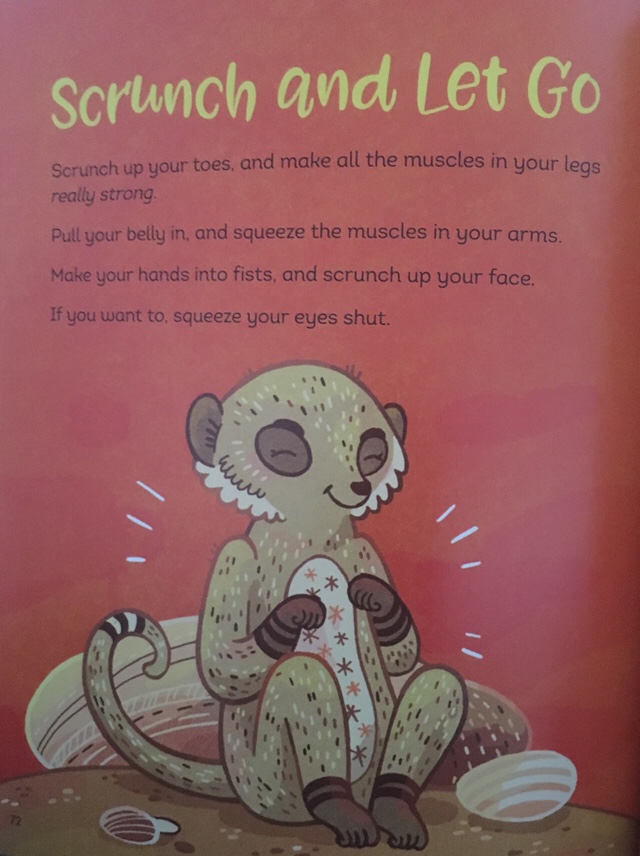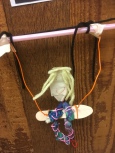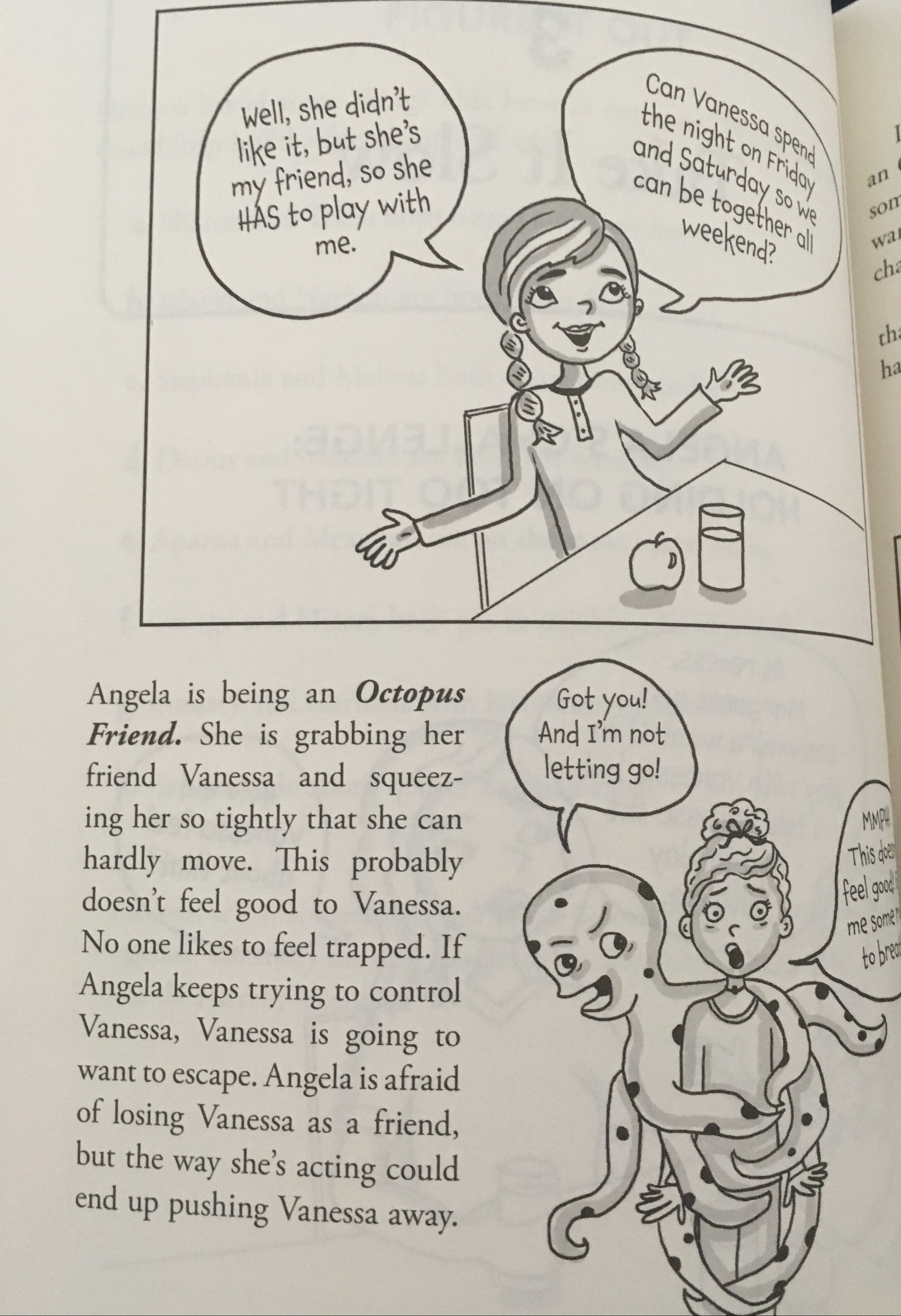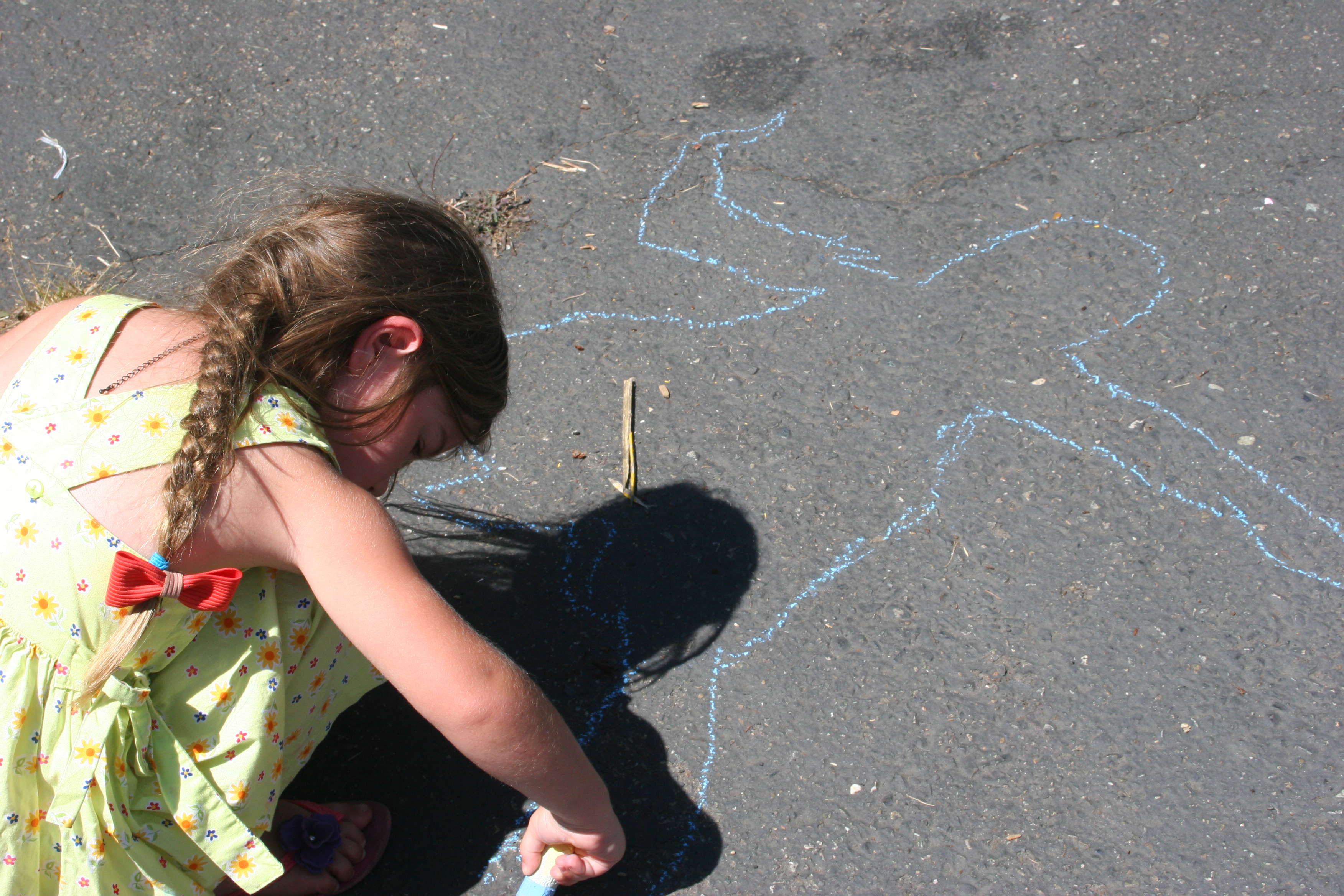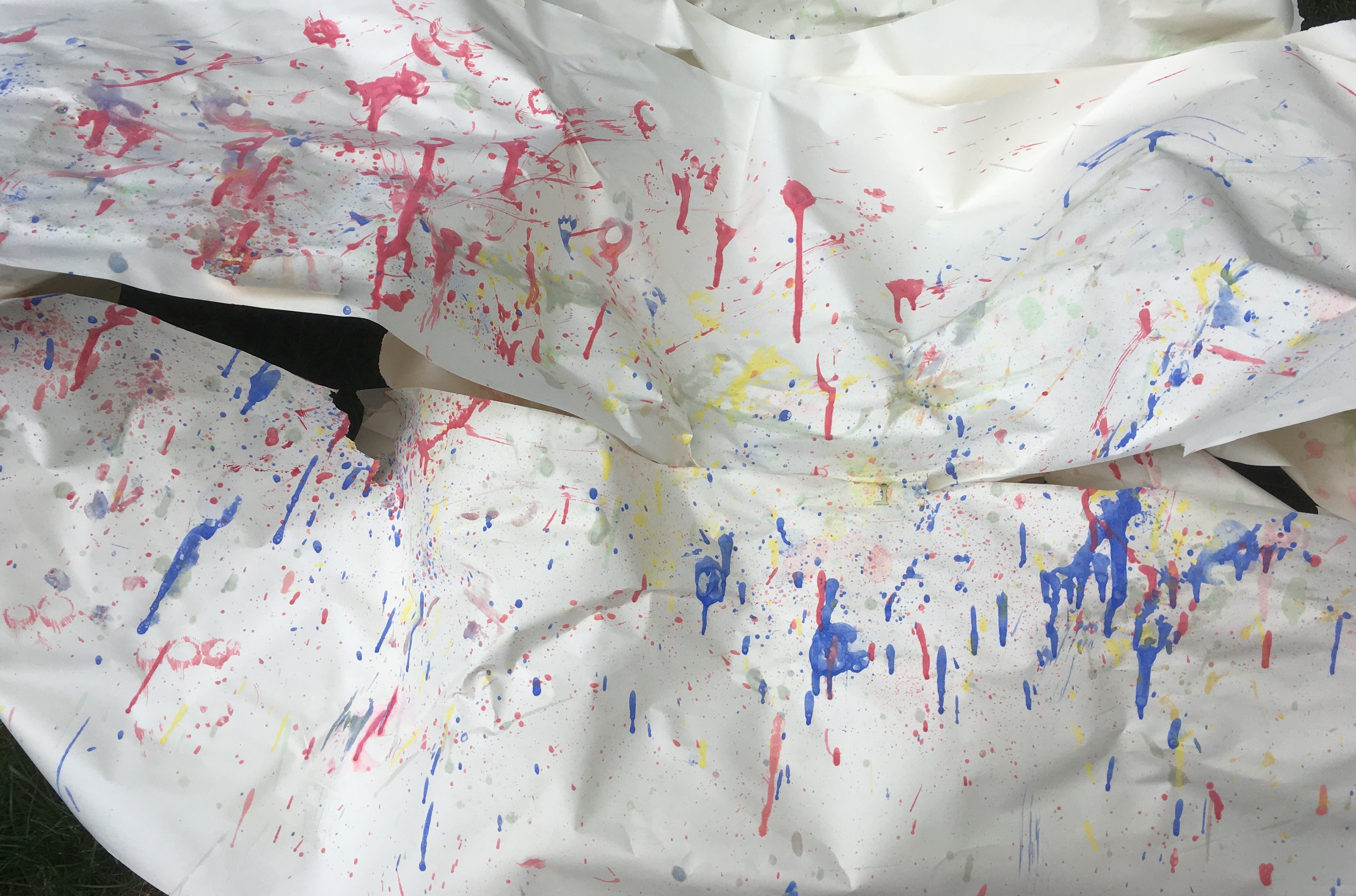Disclaimer: Payment was received for writing this post and a gift voucher to try out what Goodwill online has to offer. All opinions are my own.
Teachers make the best treasure hunters. An early years teacher will always find a use in the classroom for bizarre objects you would otherwise throw away and they’re always on the lookout for bargains. If you have a list of weird and wonderful objects you have always coveted, then Goodwill Online could be the answer to all your wishes.
A few weeks ago, I was invited to visit Goodwill to find out more about their online auction site ( think Ebay, but where the money goes to a worthy cause) and learn tips about how to win an auction bid. We were given a chance to look around and I was amazed by all the cool things for sale.
A huge selection of musical instruments.
Bulk bags of Russian dolls
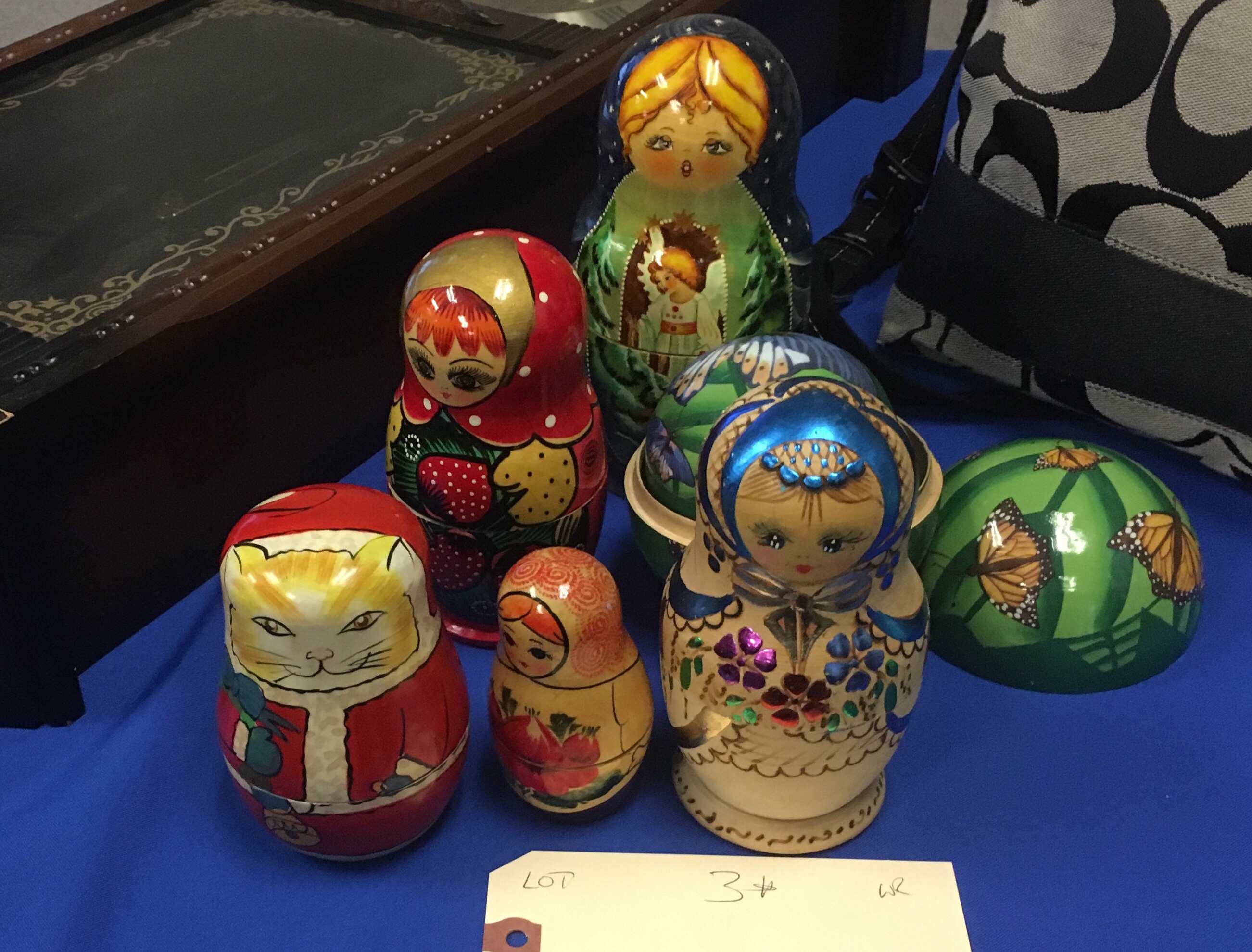
Rock collections
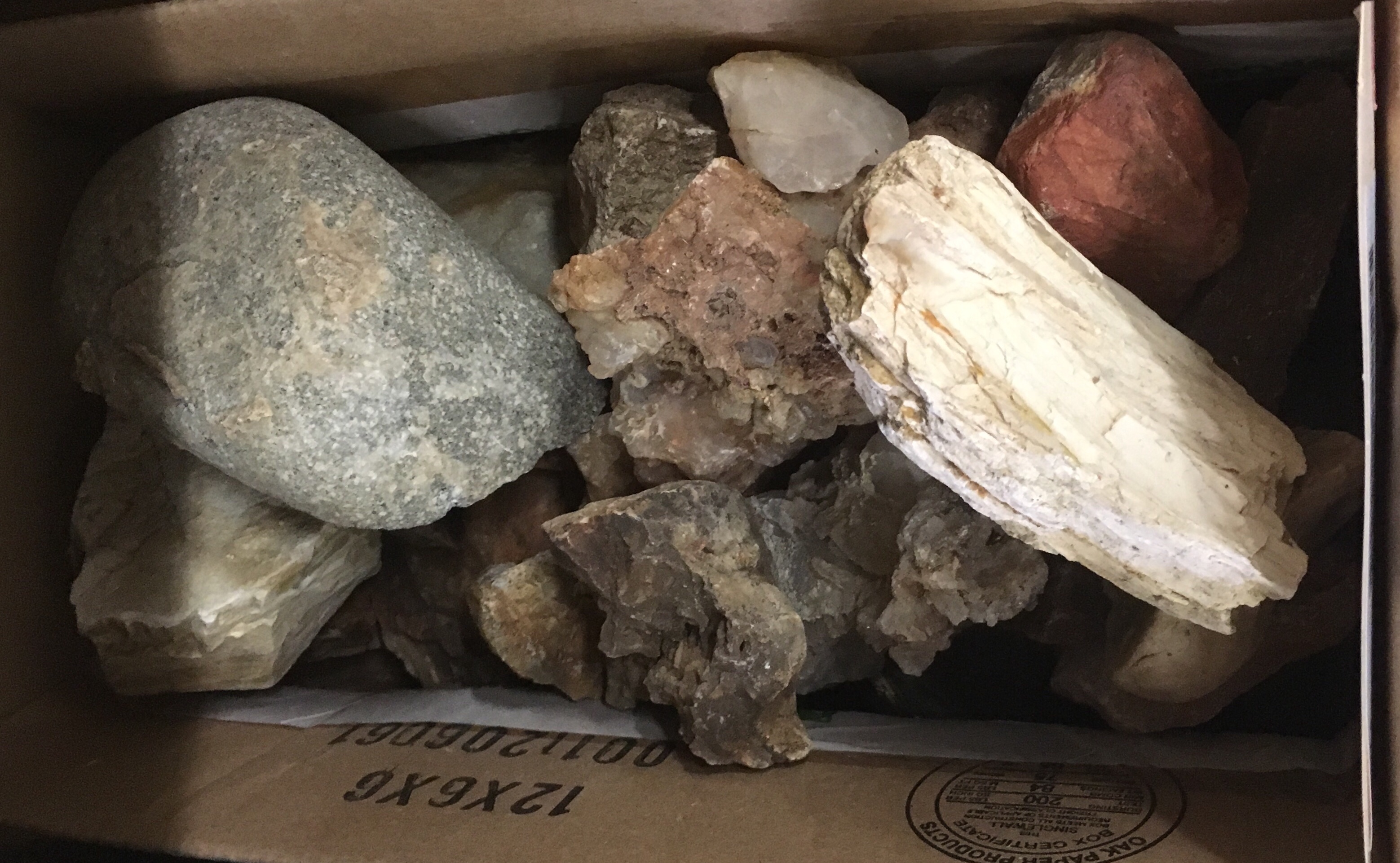
Old curiosities
and a whole warehouse of books
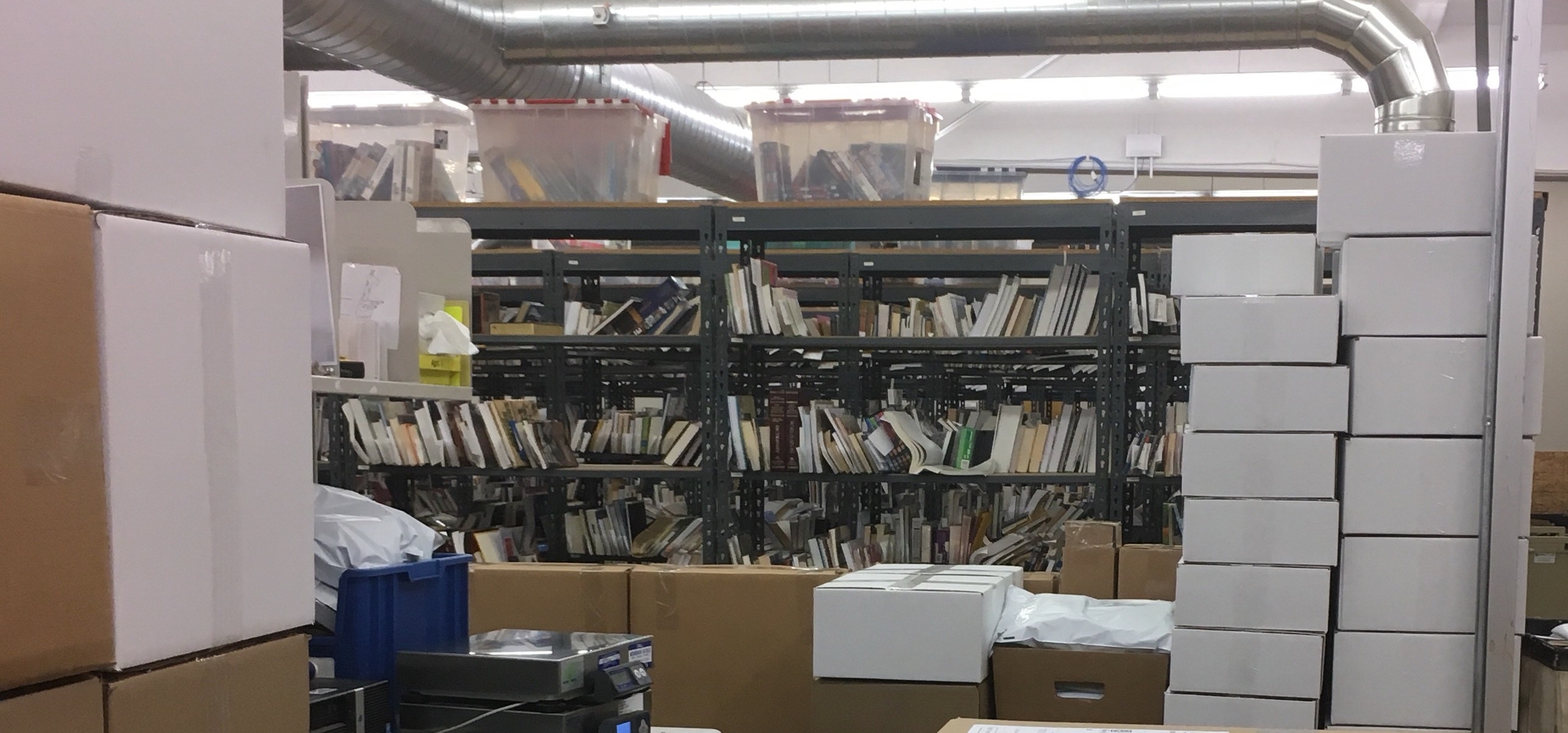
Tips For Thrift Store Treasure Hunting
Tip 1: Patience and a long list is a virtue. Dee Arneberg, America’s top treasure hunter from Spanaway, never enters a thrift store with a specific item in mind. The key to brick and mortar thrift store treasure hunting is a large wish list and multiple visits to many sites over time.
As fun as it may be to spend hours browsing interesting items, teachers are short on time so use the PERSONAL SHOPPER to help. The personal shopper allows you to set up alerts for items you are looking for and get emails every time one becomes available in the Goodwill inventory. Let’s say you were looking for Lego ( which by the way they often auction by weight) then you would enter Lego into your personal shopper and an email would notify you as to which new Lego was available.
Search key words and try properly and improperly spelled words, to catch typos that might lead you to a treasure no one else has found. Program the personal shopper to scan both item titles and item descriptions and create your keyword list accordingly.
Tip 2: Comparison shop to know the treasure’s market value. Develop your list of online comparison sites such as E-bay and specialty sites for specific categories to know the market value of an item.
Personal considerations – such as a collector looking for the last item to complete a collection – can create an artificially high auction sale, so know your item’s value and
how much you are willing to pay.
Tip 3: Household donors will often donate categories in groups,so check to see if one specific Goodwill is listing a group of luxury fashion brands or vintage lamps, or collectibles – all indicators of an estate donation of similar items. With knowledge of a specific Goodwill treasure chest, you can call up the inventory from that region and find other obscure items of interest!
Tip 4: Knowing how to maneuver the site allows you to know how many bidders you are in competition with. You can also activate a cyber ‘proxy” to always
top the leading bid up to a confidential limit you establish. And if you
really want the specific item, plan to be online during the final half an hour
of the auction, as that is when new competitors and a flurry of
bids come in. Real-time bids go down to the last second on some
items so you want to be ready to override your proxy bidder if you
simply must have an item.
Tip 5: When you lose, you still learn … about the field of regular
competitors who are interested in your categories. Each completed
auction lists the bid history which reveals the beginning/end letters
of an email which you can track as unique and learn that bidder’s
tendencies over time. As an example, those same nine bidders for
say “vintage board games” will have two or three who bid in the final minutes and are willing to spend X% of retail market value. Learning the field will sharpen your competitive edge in the final frenzied minutes of some bids. And don’t worry, most of the time another of the same item will surface over time and you will have another shot.
Tip 6: Support your local Goodwill. Each participating Goodwill has a virtual “storefront” where their current auction items are listed ahead of the offers across the rest of the site. Each Goodwill maintains their own auction inventory and benefits only from their item sales. Goodwill’s local online helps support an $8.9 million career training and initial job placement effort across 15 counties in our region.
Watch out for shipping and handling costs and remember to add the price of shipping to what you are prepared to pay. Shipping varies according to weight, size and distance of travel but can also vary according to the chosen carrier. One of the items I ordered, had priority shipping, so the shipping costs were greater than other items using ground delivery. If you support a local Goodwill you can eliminate shipping costs altogether.
Tacoma’s operation is prototyping several new attractive features such as one-cent shipping, and an instant purchase price for an item (“buy it now”). Every local Goodwill offers pickup at their operations with only a small service charge eliminating shipping costs altogether.
My experience of shopping with Goodwill Online
Firstly, be warned, it is highly addictive and you may find multiple items you simply must have. I decided to ask my personal shopper to look for puppets as this is my children’s current fascination. I wasn’t prepared for the search to bring up such amazing quality puppets and it was really difficult to choose the ones I wanted most.
My first bid was for a Muppets Wotnot puppet. I am a huge muppet fan and after a little research, found that FAO Shwartz in New York, used to have a Wotnot Studio where fans could go and make a custom puppet. The reserve on the puppet was $9.99 and postage and handling around $10. As this is a totally unique item, I wasn’t certain how far I would go with my bid but 5 mins before the auction ended, I joined the auction and decided to try a maximum bid of $35. I was really pleased to win the item at this price.
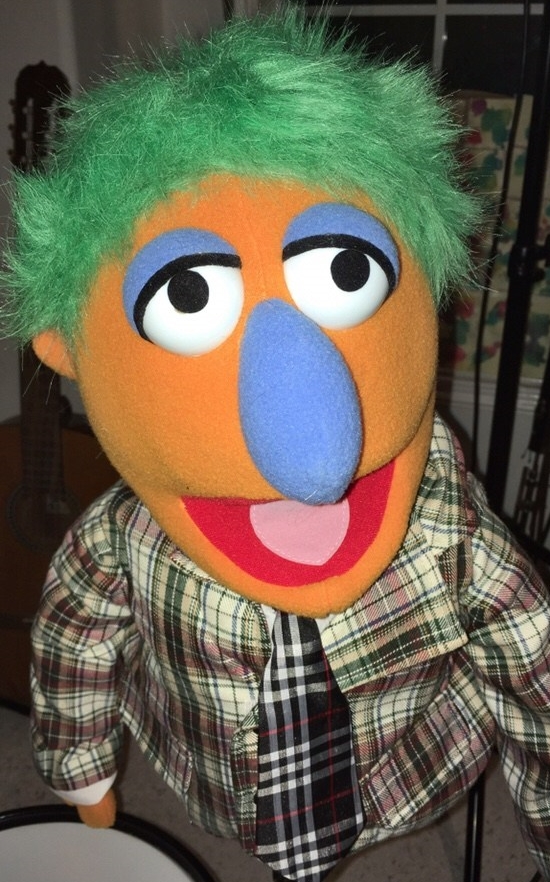
An even better surprise was when the puppet arrived. It totally surpassed all of my expectations. It looks just like a muppet, was larger than I expected and came complete with original booklets and receipts.
My 2nd puppet George was bought for $9.99 and I was the only bidder. There were a number of similar puppets available at this time so I decided on my maximum bid a few hours before the end of the auction. If I didn’t win the item, I would bid on a similar one later. The postage on this one was more that the puppet so be careful to check before bidding.
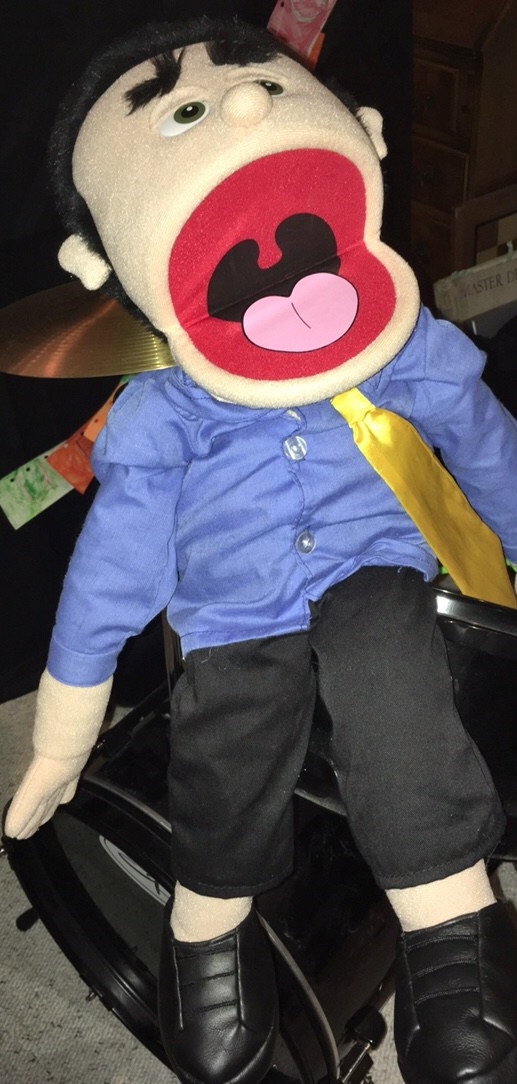
By this point I had to begin to be really selective about the puppets, as there were so many great ones. I decided only to bid on unique items or collections of puppets. I chose a Big bird and Bert puppet and my girls chose a pair of girl puppets because they wanted more female puppets. Both of these were won for under $20 with postage.
Just when I thought we were finished a 1970’s Kermit and Miss Piggy puppet came up on my personal shopper search. We have a Kermit puppet and a good Miss Piggy is hard to find so I couldn’t let this one pass. With an extra Kermit we can turn one into the evil Constantine.
Now I must stop looking at puppets because each new one that arrives is as irresistable as the one before.
What other interesting things could teachers find?
- Building blocks
- Overhead projectors
- Old typewriters
- Outdoor play equipment
- Toy cars/trains in bulk
- Globes
- Beakers and test tubes
- Maps and charts
- Balance scales with weights
- Shells
- and my personal favourite, browsing the vintage section to find weird and wonderful old objects like washboards, apple corers , record players, old cameras etc.
If you don’t want anything for your classroom or preschool Goodwill online is also the perfect place to find unusual and unique gifts for the people in your lives who have everything. I think this will be my go to place from now on.







